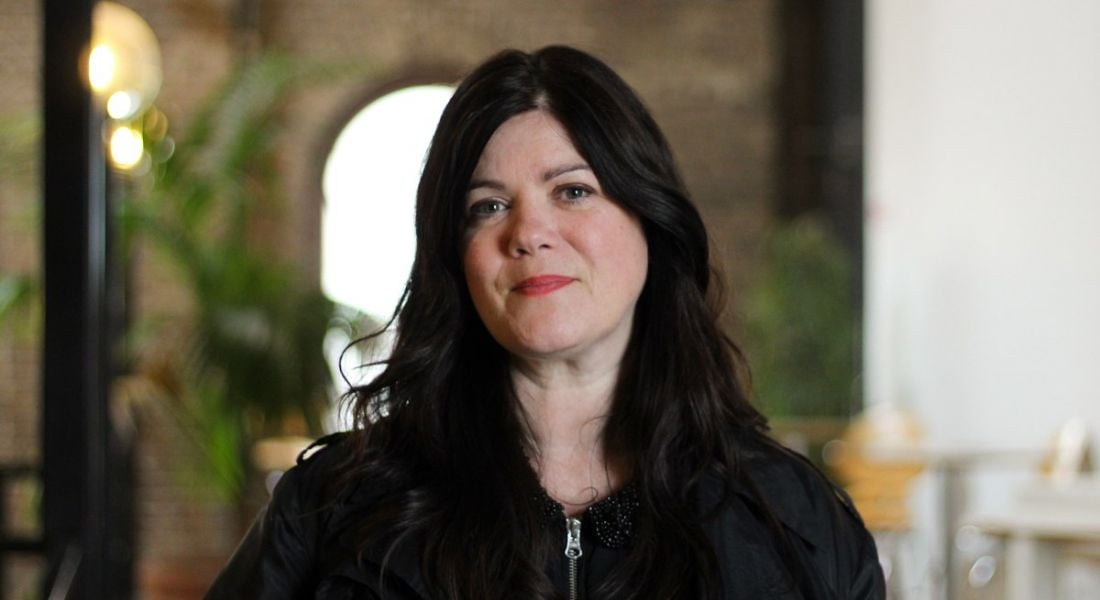Technology is embedding itself into most industries, which means those with a variety of interests can forge an entirely new tech career.
When people think of STEM, they often forget that it can be expanded to STEAM, which includes the arts. This is an important intersection because it shows how the largely logical side of STEM can benefit from the creativity that often comes with art and design.
Bringing arts into the STEM conversation also shows how a more diverse range of professionals can blend their skills and create exciting careers that include both tech and the arts.
One such example is Aileen Carville, CEO and founder of Skmmp, an Irish fash-tech start-up based at Dublin’s NDRC.
Skmmp is a B2B online order platform for luxury wholesale brands. The system digitises collections and uploads them onto an e-commerce order interface. Designers are then able to showcase ‘ready-to-wear’ collections to global luxury retail buyers.
Carville’s company blends her love of fashion and tech together and brings her all around the world. When she spoke to Siliconrepublic.com, she had just returned from Milan Fashion Week.
“Since early January 2020, starting Startupbootcamp FashionTech, I am in Milan almost every week. I fly out on a Monday and home on Fridays.”
Skmmp was selected out of 1,200 global start-ups to be part the start-up accelerator in Milan, with partners such as Prada, Accenture, Gucci and Valentino.
Getting a career start
Although the beginning of Carville’s formal education and career was primarily in art and design, she was exposed to technology from an early age.
“Growing up, my father was determined his kids were exposed to technology. We had a BBC Model B Microcomputer and did primitive coding on a cassette drive,” she said. “I love technology and the ability to shape new visual and aural landscapes using voice AI, AR and VR.”
‘I always knew I wanted to do my own thing, but I wasn’t ready then, I had to learn from someone else who had built a great business’
– AILEEN CARVILLE
Carville completed a degree in art and design at the University of Ulster, followed by a master’s degree in visual culture. She then moved to London where she hoped to get a job at one of the top art galleries, but ended up stumbling into fashion PR instead.
“My friends had worked with John Rocha over the summer in Dublin. The February I landed in London, they were invited to John’s London Fashion Week show.
“I saw they had a PR agency in London working for them, I literally posted a CV and got called for an internship interview. I got over the trial period and started working there on the John Rocha mainline accounts including the newly launched John Rocha at Waterford Crystal. Little did I know I would work for John Rocha and his studio for the next 18 years.”
Blending fashion with technology
In between London and a move back to Dublin, Carville went to Smurfit College and completed a diploma in entrepreneurial studies.
“I always knew I wanted to do my own thing, but I wasn’t ready then, I had to learn from someone else who had built a great business,” she said.
Carville travelled to London, Milan and Paris Fashion Weeks during her time with John Rocha, forged high-value relationships and learned a lot about the dynamics of the industry. But in 2012, she decided it was time to leave John Rocha and figure out what she wanted to do next. That’s where her passion for technology came to the forefront.
“I had always wanted to tackle the wholesale issue in luxury fashion, the role I knew so well, but the market was not ready for automation. I went to Dublin Institute of Technology and did a degree in digital media technology and content creation.
“Ready to start plotting the business, I did a pre-accelerator at NDRC and watched how other start-ups were approaching their ideas, initial builds, teams and so on,” she said.
Now, Skmmp’s digital showroom enables designers to show their catalogues to wholesalers and retailers without being restricted to in-person appointments, something that became more important than ever at this year’s Milan Fashion Week with the outbreak of Covid-19 in Italy.
“Armani, one of the last catwalk shows, closed their doors and streamed the show without press and buyers in attendance,” said Carville.
“Extreme, but wise, measures to avert any spread of the virus. Buyers attending showrooms in Milan and Paris have since cancelled their buying schedules, [which] is like a fashion industry blackout. Skmmp at the moment is helping and supporting brands and agencies to continue to do business during the coronavirus outbreak,” she said.
“We have been creating virtual showrooms for the past two years, but we never imagined that the coronavirus would be a driver for our solution on a global scale.”
How Fashion Week is going digital
Fashion has undergone an immense transition over the past 10 years. Traditional bricks and mortar sales are now supported by e-commerce sites and apps and, more recently, sales from these digital channels have surpassed physical store sales.
However, Carville said we are now seeing interesting ways of blending both digital and physical consumption experiences for the consumer, rather than a complete takeover.
“The traditional Fashion Week format is still very important but how business is done is changing season by season. Stockholm Fashion Week, for example, have cancelled Fashion Week in exchange for a fully digitised event.”
From a buyer point of view, Carville said that behaviour during Fashion Week sales appointments has also changed. “Buyers have less time to discover and order collections and yet they need to fulfil their budgets for the season ahead. Services such as ours fit into this new model to support change and efficiency.”
Forging a fashion tech career
For those interested in getting into the fash-tech industry, a move towards digital solutions is great news. “Technology and fashion are two very different sectors, but they coexist brilliantly,” said Carville. “The new luxury fashion is wearable tech, a connected wardrobe, sustainable supply chain, luxury goods authentication and blockchain.”
However, she added that those who have the interest need to gain first-hand experience of what is happening in the fashion industry so that you can use technology to fix it.
“Knowing the problem the industry has is intrinsic to the product design and technology employed,” said Carville. “Being able to articulate the problem and solution is a great starting point for creating the platform, curing workflow problems with technology along the way.”




